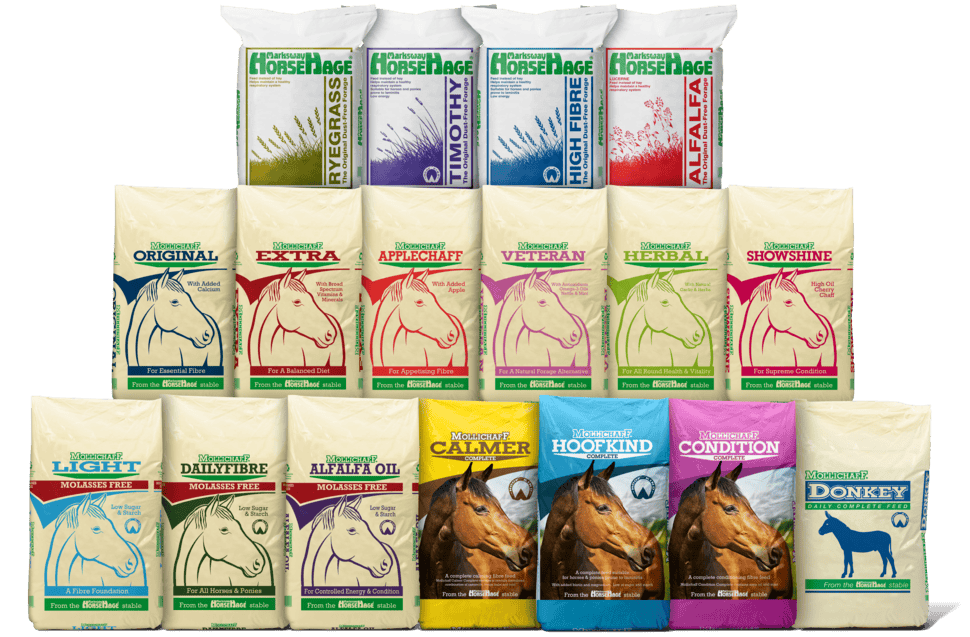What is Cushing’s Disease?
Cushing’s Disease, also known as Pars Pituitary Intermedia Dysfunction (PPID), is a hormone imbalance which is commonly caused by enlargement of the pituitary gland. The pituitary gland is a small gland at the base of the brain and controls many body processes through the secretion of different hormones. In horses that suffer from PPID, the middle section of the pituitary has become enlarged which causes an increase in the production and release of certain hormones, one of which is ACTH (adrenocorticotrophin hormone). This hormone makes its way to adrenal glands around the horse’s kidneys and causes them to overproduce cortisol (a type of steroid). It is the overproduction of this steroid that causes the classic Cushing’s/PPID symptoms.
Cushing’s disease has become increasingly diagnosed over recent years, perhaps as like people, horses are now living longer. Although it can affect younger individuals, Cushing’s generally affects older horses and ponies; ponies often seem to be more prone to this than horses but there isn’t currently a particular breed or sex that seems to be more predisposed to the condition.
What are the Symptoms of Cushing’s/PPID?
There are a number of symptoms that horses/ponies prone to Cushing’s may exhibit, and individuals may show one or several of the symptoms below:
- Long/thick/curly coat
- Excessive sweating
- Potbelly
- Significant loss of topline
- Increased thirst and appetite
- Laminitis
- Abnormal fat distribution particularly above the eyes/on the crest of the neck
- Lethargy
- Increased predisposition to infection/worm burden
The Importance of Nutrition in the Management of Cushing’s
There is currently no known cure for Cushing’s Disease but the correct medication and veterinary support are vital. Careful management and correct nutrition is also key in ensuring your horse/pony lives as normal a life as possible. As a general rule, horses prone to Cushing’s should be fed as though they are prone to laminitis. This means that all forage and concentrate meals if fed, should be kept as low in Non Structural Carbohydrate (NSC) – made up largely from starch and sugar – as possible, so avoid high starch cereal based, or heavily molassed feeds. Consider using a fibre-based concentrate feed to provide calories from digestible fibre rather than starches and sugar and ensure that correct levels of minerals and vitamins are also provided, either in a high fibre complete feed, or as an additional powdered or pelleted supplement or suitable balancer. Monitoring body condition and fat pocket distribution is very important. Being overweight can result in oxidative stress in the horse’s body, and this stress, over a period of time, may increase the severity of some of the symptoms of the condition. In addition, obesity may contribute to the horse developing insulin resistance; PPID can cause this to become worse.
Forage will play a large part in the management of horses and ponies prone to Cushing’s. If hay is being fed, this ideally should be tested to ensure it contains a WSC (water soluble carbohydrate) level of less than 10%. However, this can be both costly and time consuming as hay can vary a huge amount from bale to bale. Soaking hay will reduce the level of WSC, and can be a good option, but may not be a practical option in freezing winter temperatures. Some varieties of bagged forage are safe to feed to horses and ponies prone to Cushing’s but ensure you choose the correct calorie option for your horse or pony’s requirements. In an ideal world we all know our horses should have ad lib access to a fibre source of some sort, however, this is not always possible for horses and ponies prone to Cushing’s who may gain weight easily. Feeding a low calorie, low starch and low sugar bagged forage in small holed or double-netted haynet and splitting their allowance up into as many small meals as possible will all help to ensure they’re never stood for too long without anything to eat. Remember that your horse will consume large amounts of calories if turned out in a field full of grass, so restricting their intake is key. There are various techniques to restrict intake, including the use of grazing muzzles and track grazing. Try to ensure your grazing has been properly managed for horses and ponies and isn’t very rich, fertilised cattle grazing.
Although somewhat less common, some horses suffering from PPID may require a little extra help maintaining or gaining weight. As already discussed, good quality forage should always form the basis of the diet, but if bucket feeds are required it is particularly important to remember the “little and often” rule. This will help to manage insulin dysregulation as much as possible and therefore helping to reducing the chance of laminitis (even underweight individuals may have a higher predisposition to an attack).
Top Tips for Feeding Horses and Ponies Prone to Cushing’s
- Try to keep your horse at a healthy weight.
- Choose fibre-based feeds that are guaranteed to be low in sugar and starch.
- Ensure you supply a balanced diet – recommended amounts of vitamins and minerals are essential.
- Feed little and often to avoid peaks and troughs in blood glucose.
- Restrict grazing if necessary. Horses and ponies often consume far more calories than we think whilst turned out.
As mentioned above a high-fibre, low starch and sugar diet is most suitable for horses and ponies with PPID. Look for products in the HorseHage and Mollichaff range with the Hoofkind logo:
- HorseHage Timothy
- HorseHage High Fibre
- Mollichaff HoofKind Complete
- Mollichaff Calmer Complete
- Mollichaff Light Molasses Free
- Mollichaff Alfalfa Oil
Want free nutritional advice?
Our friendly and knowledgeable team is available on weekdays from 9am to 5pm.
Give us a call at 01803 527274 or send an email to sales@horsehage.co.uk


